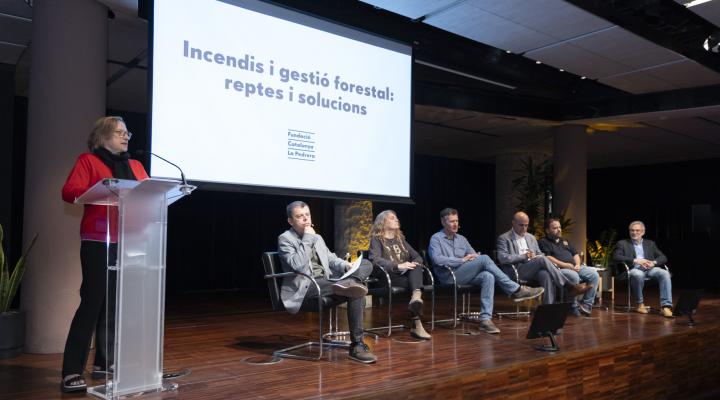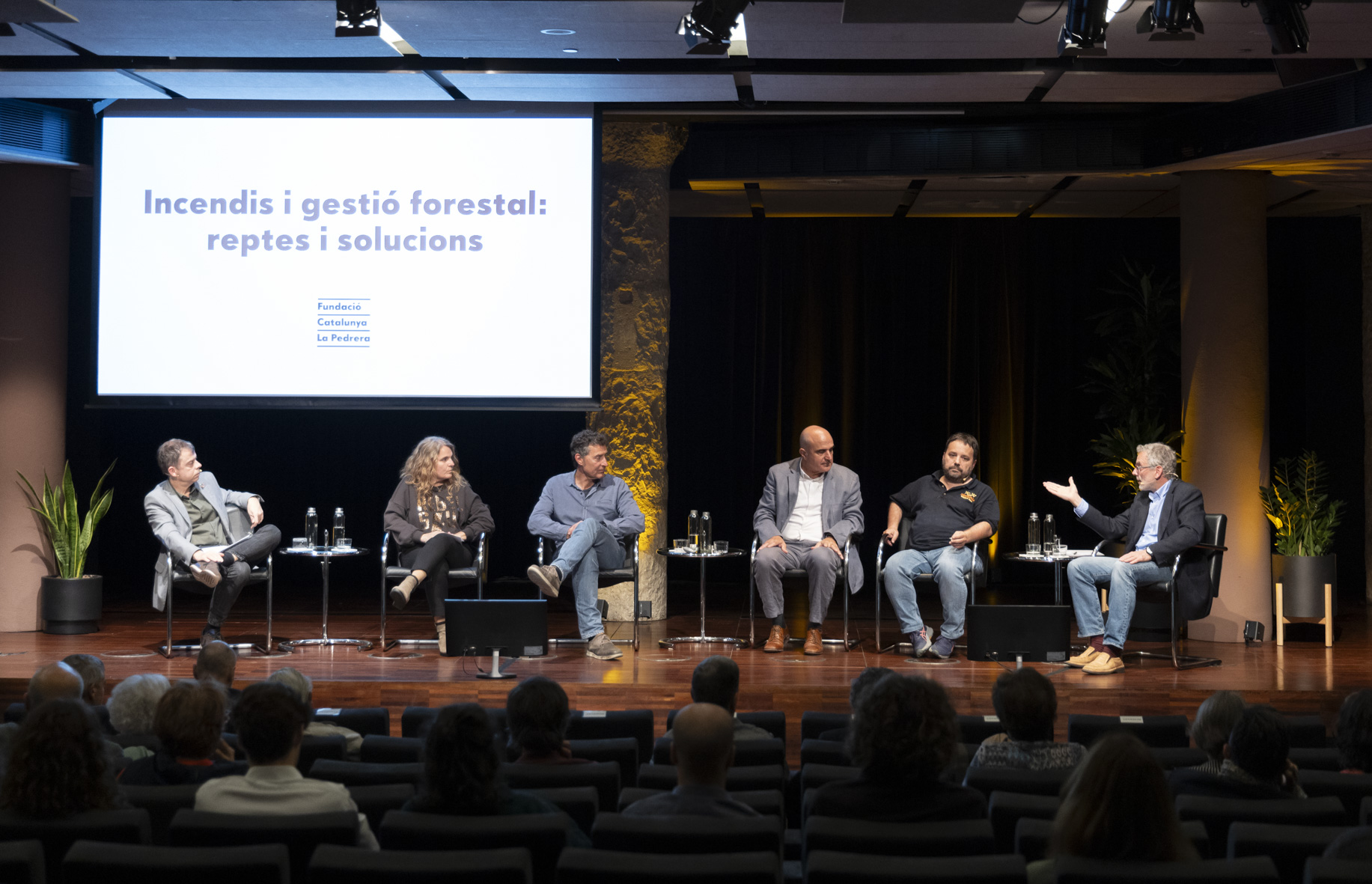
The Catalunya La Pedrera Foundation brings together over one hundred experts in forest management
On 16 May, more than one hundred experts and professionals from the sector gathered at La Pedrera Auditorium for the event Forest Fires and Forest Management: Challenges and Solutions, organised by the Catalunya La Pedrera Foundation. The event served as a platform to explore the challenges and solutions associated with sustainable forest management and fire prevention.
The aim of the event was to explore innovative solutions in areas such as sustainable forest management in response to global environmental challenges. In this regard, the Catalunya La Pedrera Foundation has forest management embedded in its identity, with a strong commitment to nature-based forest bioeconomy projects. The Foundation manages ten forest estates covering over 4,500 hectares, where it applies a successful model that can be scaled up to other forested areas across the country. Currently, 83% of its woodlands are governed by an approved and active forest management plan.

Marta Lacambra, Director General of the Catalunya La Pedrera Foundation, welcomed attendees and remarked: “With the fire that occurred a few years ago at Món Sant Benet, we learnt a key lesson: the importance of properly managing our forests. At the Foundation, we developed a forestry culture and, realising this alone wasn’t enough, we also decided to collaborate with our neighbours. Only by working together can we begin to tackle climate change or the risk of wildfires, and we cannot leave forest owners to face the long list of procedures on their own. We need to work hand in hand with specialists, and especially with the fire service, to focus on priority areas.”
The event reflects a commitment to promoting sustainable forest management models, such as that of the Catalunya La Pedrera Foundation, which not only reduces wildfire risk but also fosters circular, social and demonstrative bioeconomy models that benefit both forests and local communities. By 2025, the Foundation aims to have carried out priority work on more than 380 hectares of woodland under its care, alongside additional areas under forest stewardship and a medium- to long-term forest planning strategy.
Miquel Rafa, Director of Sustainability and Territory at the Catalunya La Pedrera Foundation, stated: “At the Foundation, we are taking responsibility as landowners and managers. Given the current situation and the widespread lack of management, we have reviewed and adapted our plans to meet today’s challenges. We’ve done this through forest management, fire prevention plans, silvopasture and bioeconomy initiatives. We set out a 2023–2025 plan with more than half a million euros in investment to determine how best to manage our hectares. But we also recognise the need to broaden our impact through stewardship agreements, prioritising strategic zones, defining clear areas of action and pooling resources – human, financial and expertise – to strengthen management. We want to contribute to the forest sector by helping to drive greater efficiency and effectiveness in the fight against climate change and its consequences.”
The event was moderated by Francesc Mauri, meteorologist and climate crisis specialist, who remarked: “In 2024, nothing can be understood in isolation, and the reality of our forests is one of the issues that demands a cross-cutting approach. Forest management is intertwined with the history of our species. As a species, our challenge is to move forward, and we are surrounded by other species playing a game much like ours. Without alliances or joint efforts between species, we are doomed.” He added: “The rain over these past few days mustn’t distract us or blur our focus, because humans only act when it’s already too late.”
Marc Castellnou, Head of the Forest Action Group of the Government of Catalonia, also took part in the event and stressed: “The forests we have are not adapted to the current climate and cannot withstand the onslaught of climate change. There is more and more fuel ready to burn, and the paradigm has shifted: we’re no longer defending the forests – we’re defending ourselves from them.” He highlighted a striking figure illustrating the impact of rising temperatures on forests: “In the 1990s, there were around 32 summer days when temperatures exceeded 30 °C. In 2021, there were 171 such days.”
Also participating was Míriam Piqué, Programme Lead at the Forest Science and Technology Centre of Catalonia (CTFC). Piqué explained: “Fire is an intrinsic part of our Mediterranean forests, and different species have their own methods of adaptation – some need fire to regenerate, or can even survive it. That said, there’s no one-size-fits-all solution. We can invest in better preparing landscapes, particularly in areas with low fuel loads, and in planning to support fire suppression. We must also move forwards with forest management that embraces multifunctionality and climate adaptation, and promote forests that are more resilient, more diverse and better able to withstand wildfires.”
In his remarks, Ricard Farriol, Head of Forest Planning at the Forest Ownership Centre, shared with attendees: “Eighty percent of Catalonia’s forest area is privately owned. The challenge we face is to implement management models that change the current structures on the ground and develop new ones that support different behaviour in the event of a fire. At present, 31% of forest area already has a management plan in place.”
Finally, Vicente Guallart, co-founder of the IAAC (Institute for Advanced Architecture of Catalonia), noted: “From the field of architecture, we see an opportunity. If concrete were a country, it would be the world’s third-largest emitter of CO2. We need to use new construction materials that don’t emit CO2 but act as carbon sinks. We must move beyond grand political declarations and start passing laws that limit the CO2 emissions of the buildings we construct, promote the circular bioeconomy and back projects that can transform the economy. We apply many rules and procedures designed for urban and city planning to rural and forested areas.”